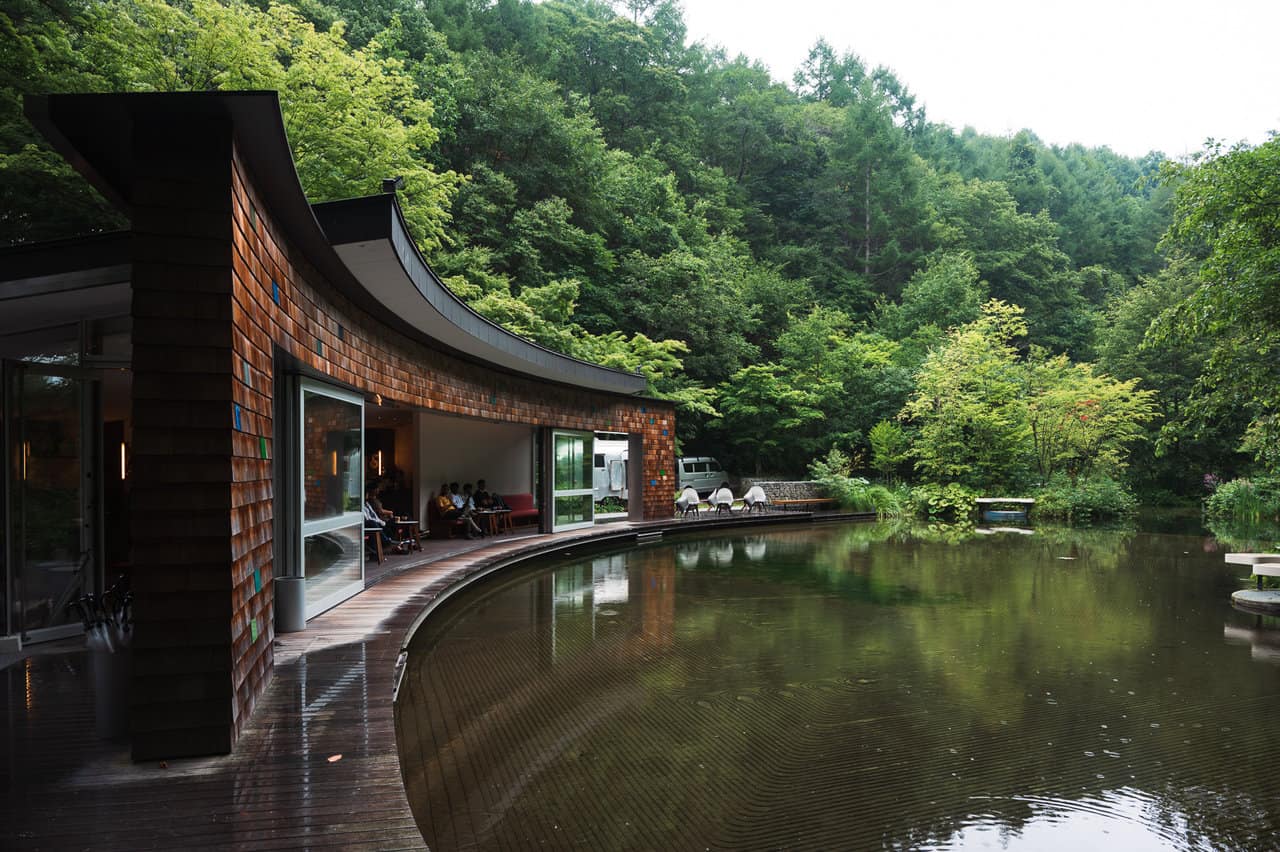Sustainable Tourism has become an increasingly important topic as the world considers how to maximize the potential of global tourism to support local businesses and economies, increase global understanding between nations, and sustain fading traditions and cultures. At the same time, sustainable tourism aims to reduce the footprint of travel on the environment by avoiding over-tourism in a few local areas and spreading both the burdens and benefits of tourism over a much wider area.
In Japan, there are many opportunities to participate in sustainable tourism initiatives simply by diversifying your itinerary to include destinations and activities that fall outside that of the typical visitor to Japan. Over the past year, Tokyo and Around Tokyo has revealed dozens of amazing locations and activities in Tokyo and ten of its surrounding prefectures from the perspective of sustainable tourism on its social media accounts. I have selected a few hidden gems located just outside the Tokyo area in Niigata, Yamanashi, and Nagano prefectures.
Best of all, visitors to Tokyo can access these places using discount passes offered by Japan Rail (JR), making travel quick and convenient.
- Suwada Open Factory & Tsubame-Sanjo Regional Products Center: Tour Behind Japan’s Famed Metalwork in Niigata Prefecture
- Fujiyoshida City: Showa era charm, Views of Mt. Fuji, and Renovated Private House in Yamanashi Prefecture
- Picchio: A Wildlife Research Center Tours of Nagano’s Forests & Asiatic Black Bear Conservation in Nagano Prefecture
- Discount Travel Using the JR Pass
Suwada Open Factory & Tsubame-Sanjo Regional Products Center: Tour Behind Japan’s Famed Metalwork in Niigata Prefecture
Niigata Prefecture is only a little over an hour from Tokyo by train, but few visitors to Japan know much about its history and attractions to plan a trip there. While there are many great reasons to visit Niigata, from its abundant ski areas to its renowned sake and fresh seafood, the history of Niigata is deeply rooted in the skill and dedication of its craftspeople.
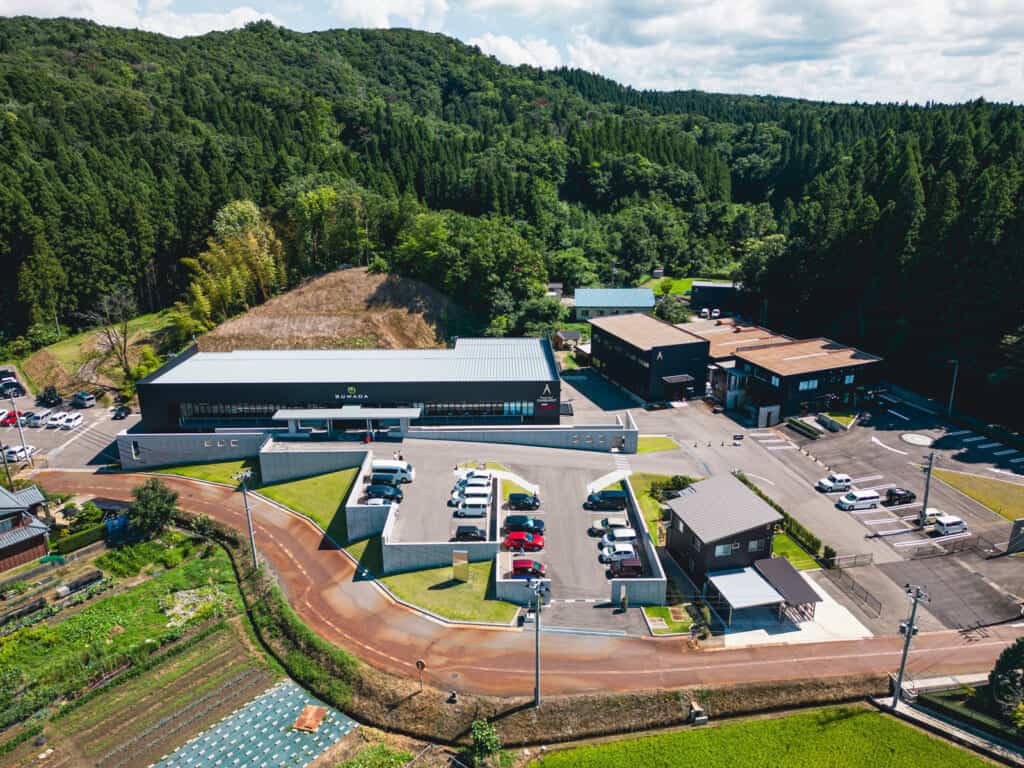
Niigata Prefecture is part of the “Takumi Kaido” (Artisan Road), a network of cities and towns along the side of Japan facing the Japan Sea known for producing traditional Japanese crafts such as washi paper, copperware, and bladed tools. The long, harsh winters kept farmers indoors for many months of the year, so in order to support their families, many farmers learned additional trades as craftspeople in metalworks, including copper and steel. As a result, Niigata became world-renowned for producing high-quality tools such as knives, gardening shears, kitchenware, and beauty industry goods.
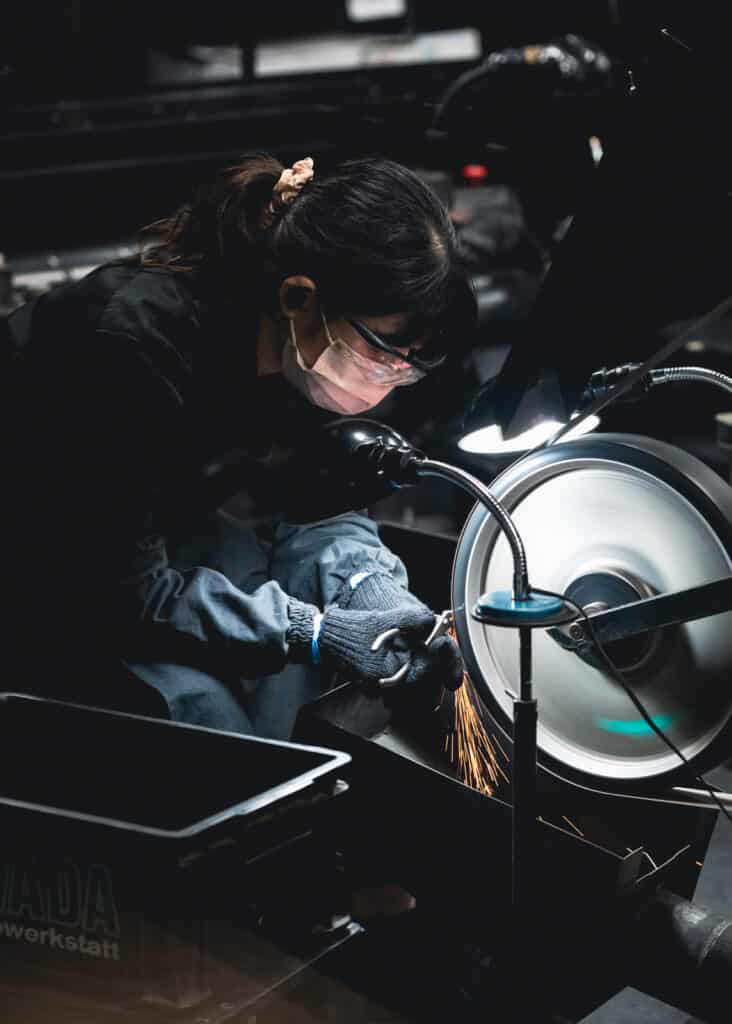
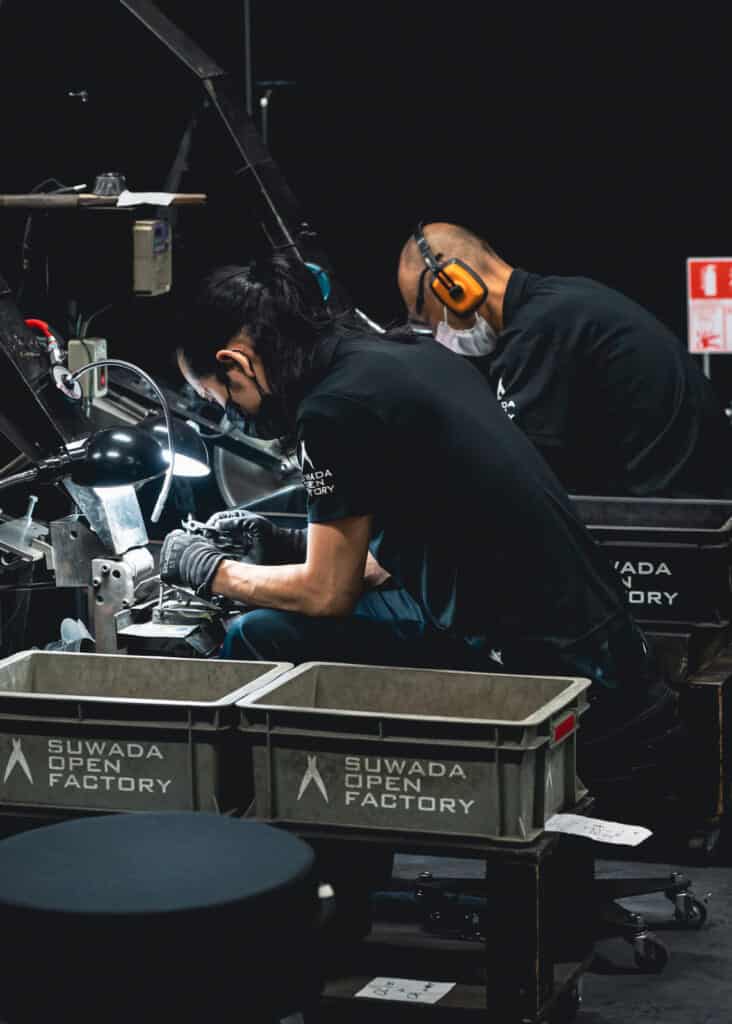
In recent years, factories producing these types of goods have begun to attract foreign and domestic tourists interested in seeing the skills and techniques of these master craftsmen close up. In response, companies like Suwada, which built their reputation on exceptionally high-quality nail clippers, have retooled their factories to make them accessible to visitors. The Suwada Open Factory has created a factory floor set up so visitors can safely view the production process up close from behind glass. Most steps of the process can be seen, and in some cases, it is almost like being able to watch over the shoulder of the craftsperson doing the work. Once you witness the care and precision put into each step of the production process, it will become clear why Suwada products are well-known for their quality standard.
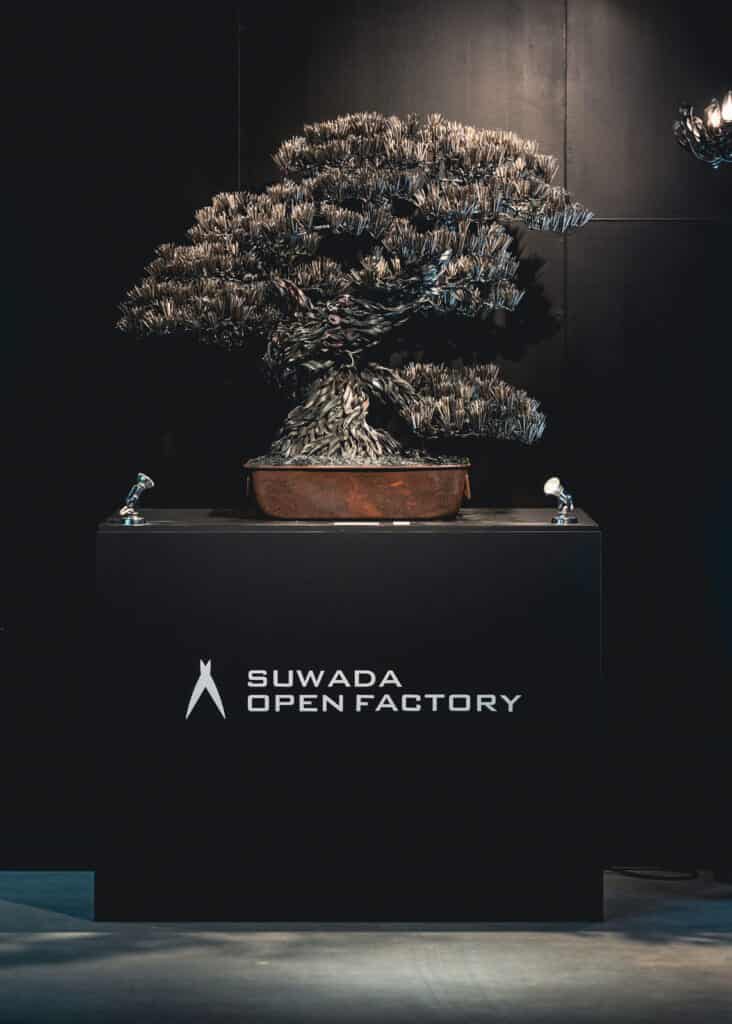
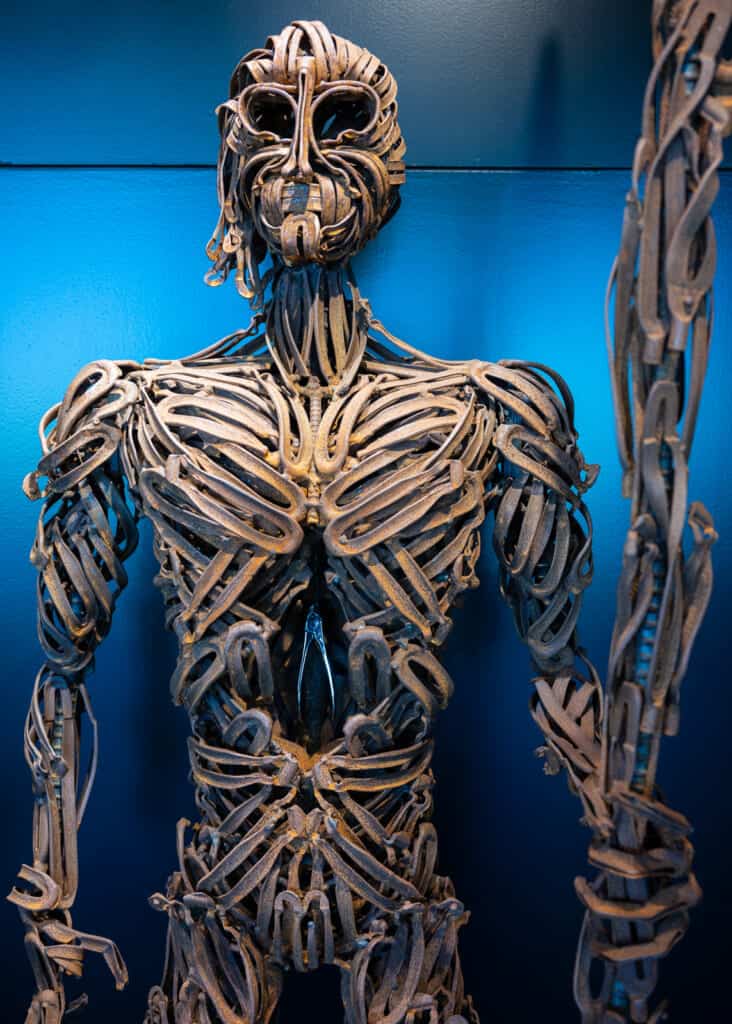
Suwada realizes most people won’t visit the factory just to observe the production floor, so the new facility also includes a restaurant, shop, and a display of unusual items made by or collected by Suwada that rival a small museum.
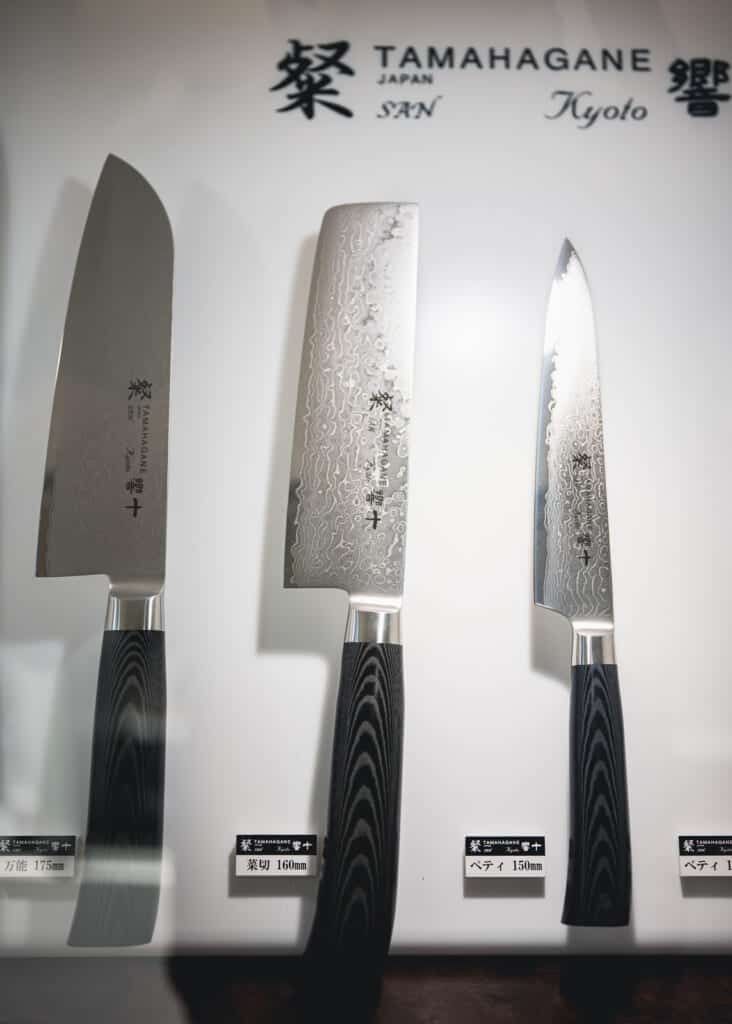
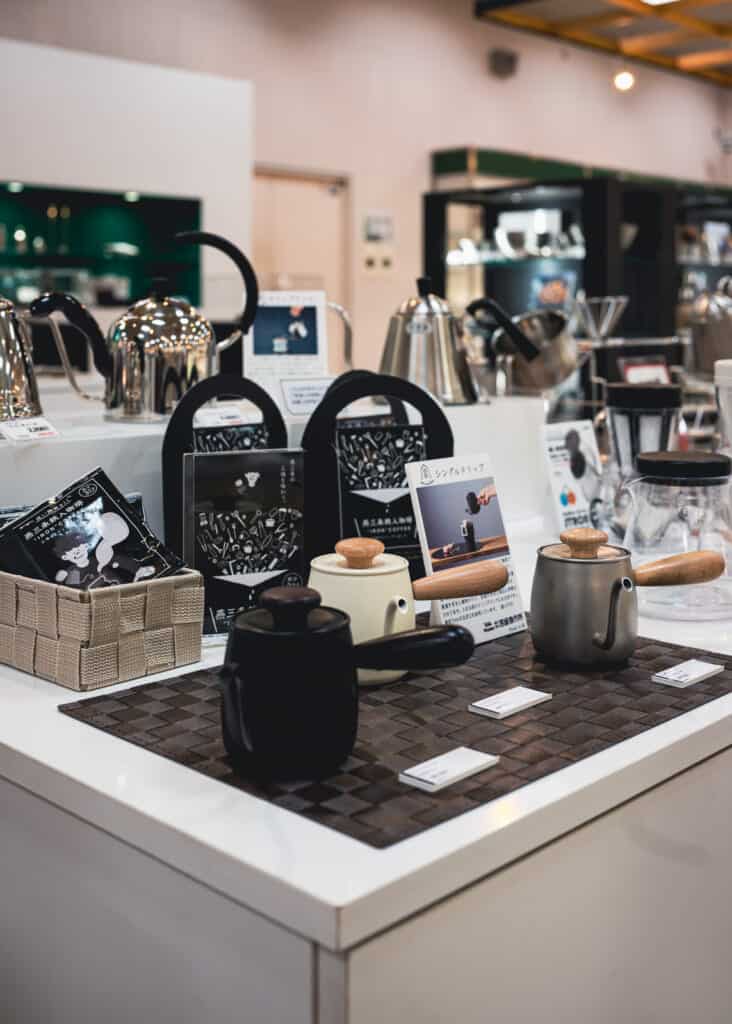
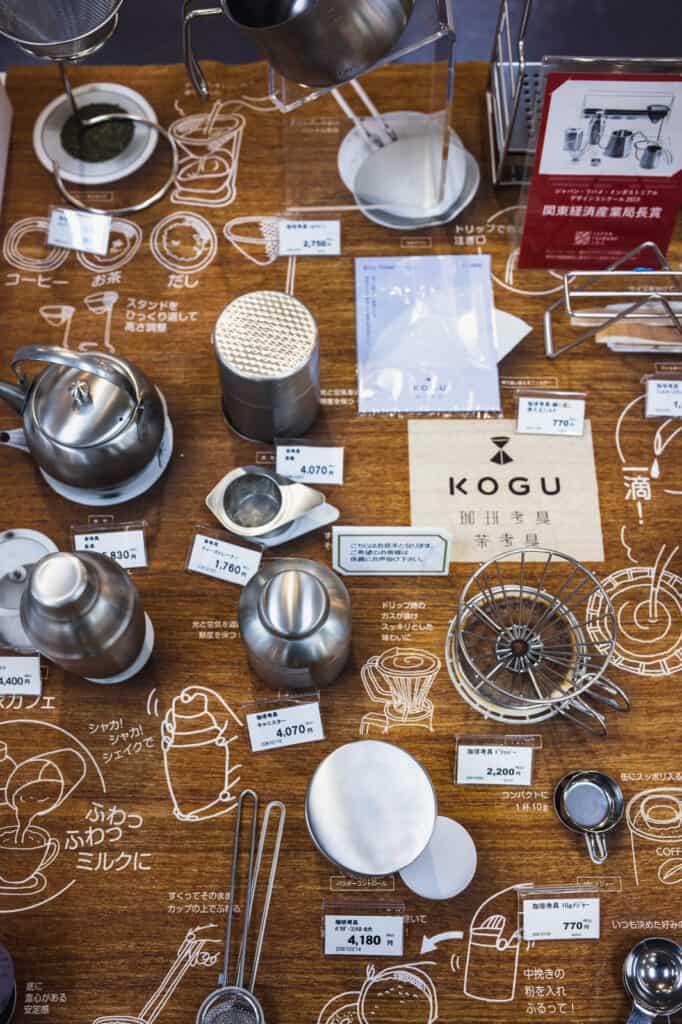
If you don’t have the time or means to visit the Suwada Open Factory, that doesn’t mean you need to forgo the appreciation of Niigata-made products. The Tsubame-Sanjo Regional Products Center is a few minutes walk from Tsubame-Sanjo JR station and carries hundreds of locally produced products, from everyday use items like kitchen utensils and gardening tools to unique handmade works of art like copper teapots. Most items are displayed so they can be easily seen, held, or touched to help convey the quality of their craftsmanship. The Regional Products Center often has visiting artisans doing product demonstrations.
Fujiyoshida City: Showa era charm, Views of Mt. Fuji, and Renovated Private House in Yamanashi Prefecture
Even if you’ve never heard of Fujiyoshida City, you may have already seen the famous photos of it. This Yamanashi Prefecture city has a postcard-perfect main street that, when photographed at the right angle, appears to end at the foot of Mount Fuji. The city attracts a lot of attention for its famous view; unfortunately, most visitors spend little time here after snapping a few photos or videos for their social media accounts.
Long-time locals recall the days when Fujiyoshida was a thriving textile manufacturing center after World War II. The local Nishiura District came alive every night with food, drink, and entertainment venues. But the good times didn’t last for the city, and establishments in Nishiura began to close their doors for good.
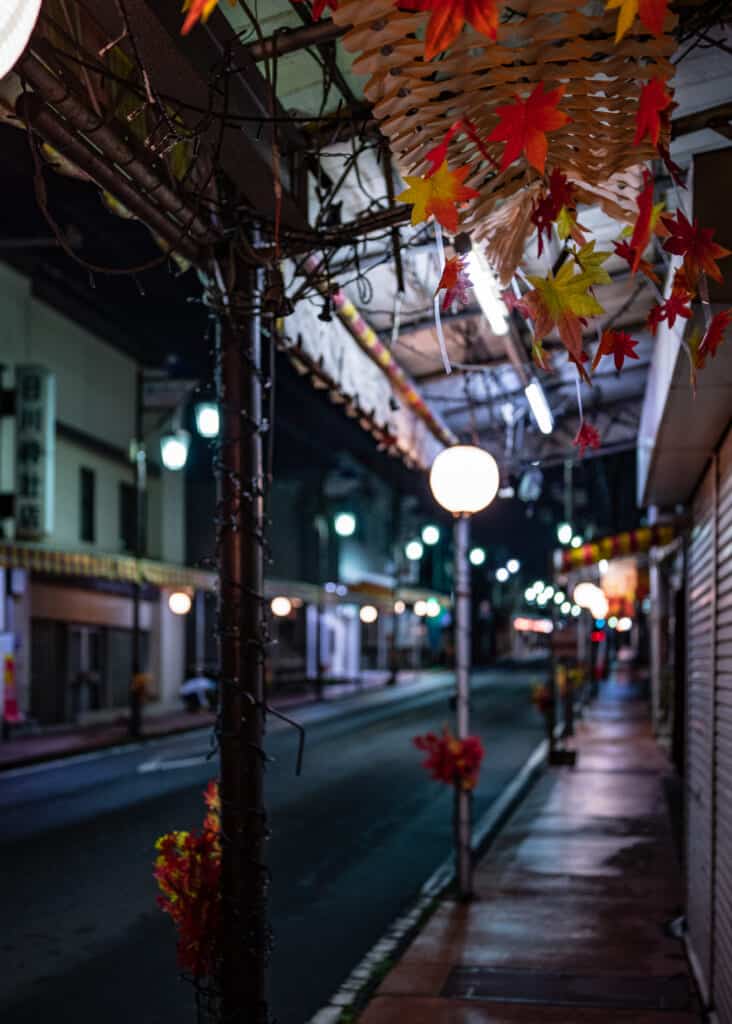
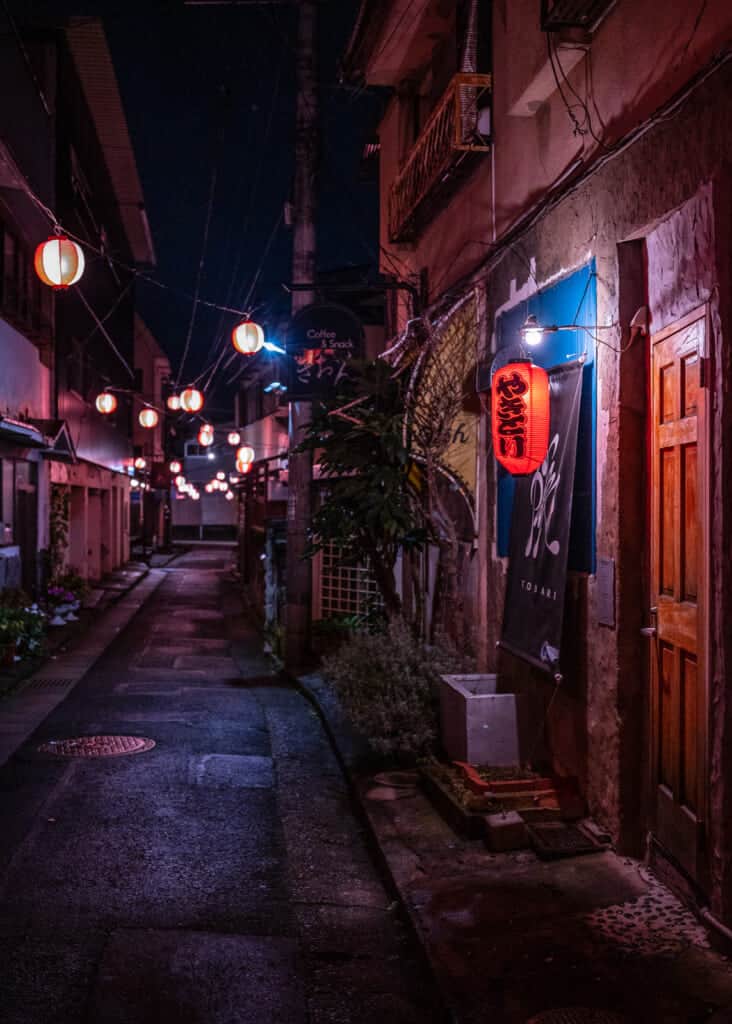
Recently, a younger generation of patrons has rediscovered the Showa era charms of Nishiura, and a new generation of owners have began to reopen the old establishments with updated menu items, craft beers, and other ways to appeal to new visitors. The neon lights are buzzing once again in Nishiura, recreating the night time atmosphere that made Fujiyoshida the vibrant city it was in the past.
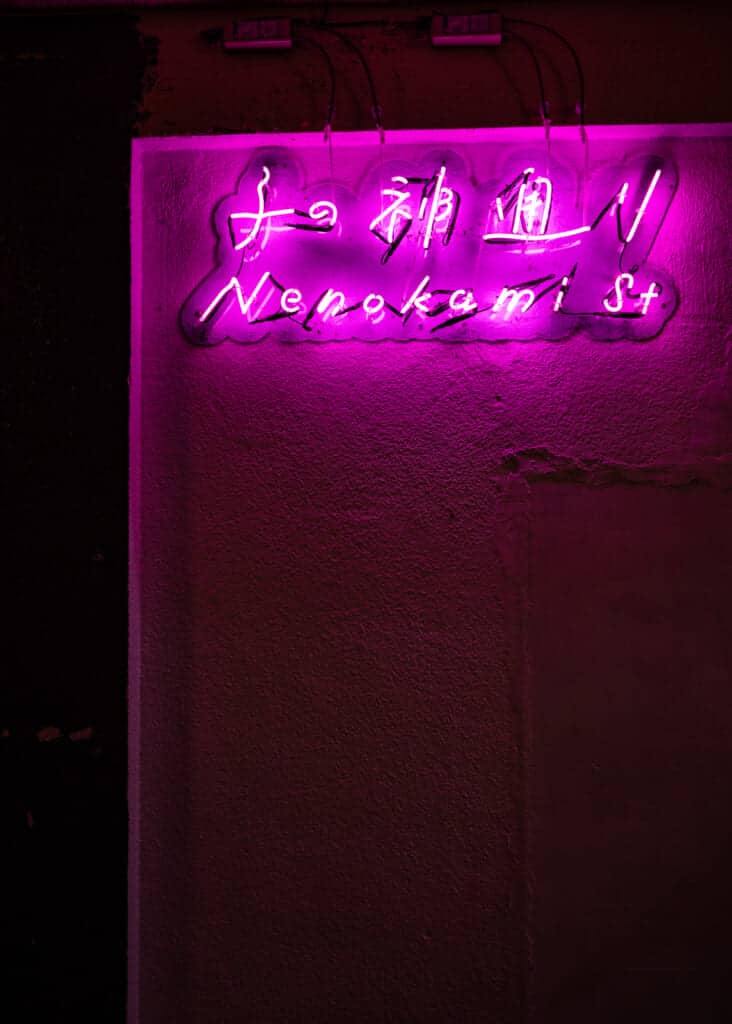
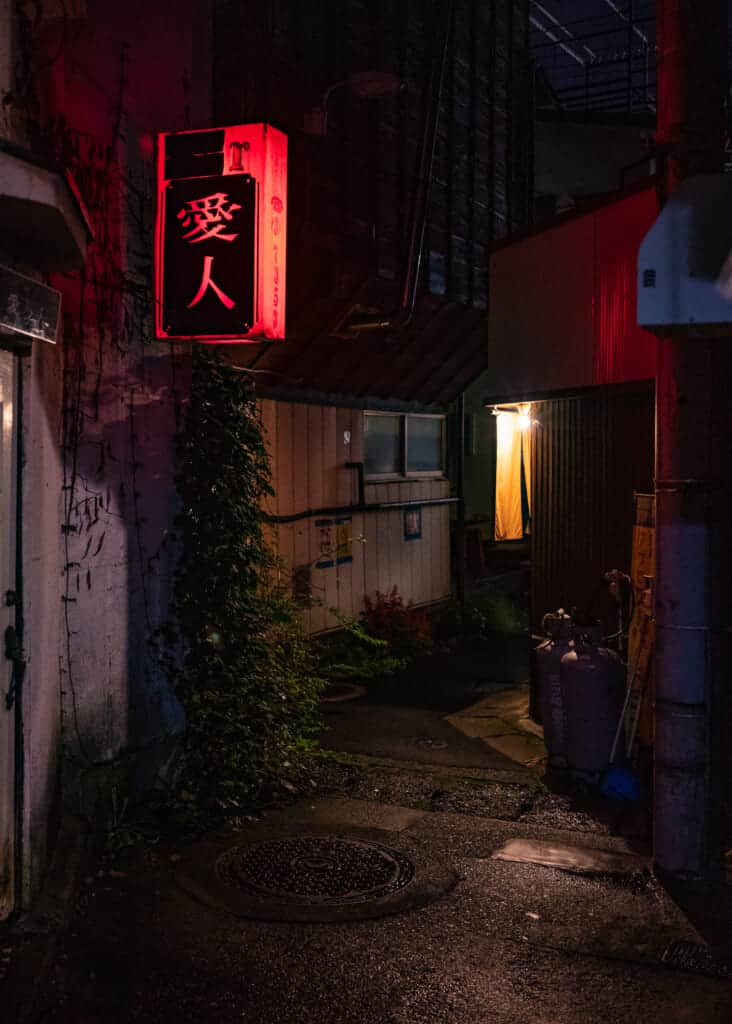
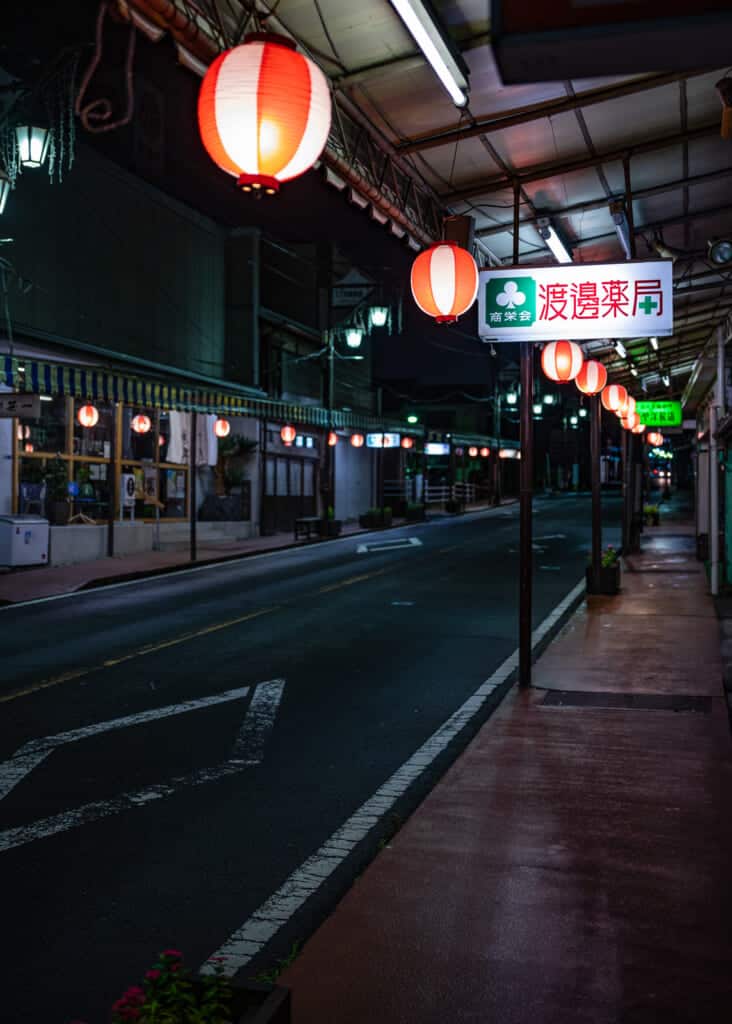
If you want to come and enjoy a night of eating and drinking in Nishiura, you either have to come with a designated driver or book a place to stay in a city not known as a natural tourist destination. Fortunately, the young entrepreneurs of Fujiyoshida have you covered in this respect too. Hotel Re:Link is a new accommodation that opened in 2021. The moniker “hotel” might be a bit misleading as Hotel Re:Link is a renovated private house for a single group of people to stay in at a time, a la Airbnb. Like many rural Japanese cities, empty properties are on the rise in Fujiyoshida, and making use of these houses is a solution for supporting local tourism on a small scale. Hotel Re:Link even uses recycled materials as interior decor to keep with the low-environmental impact theme.
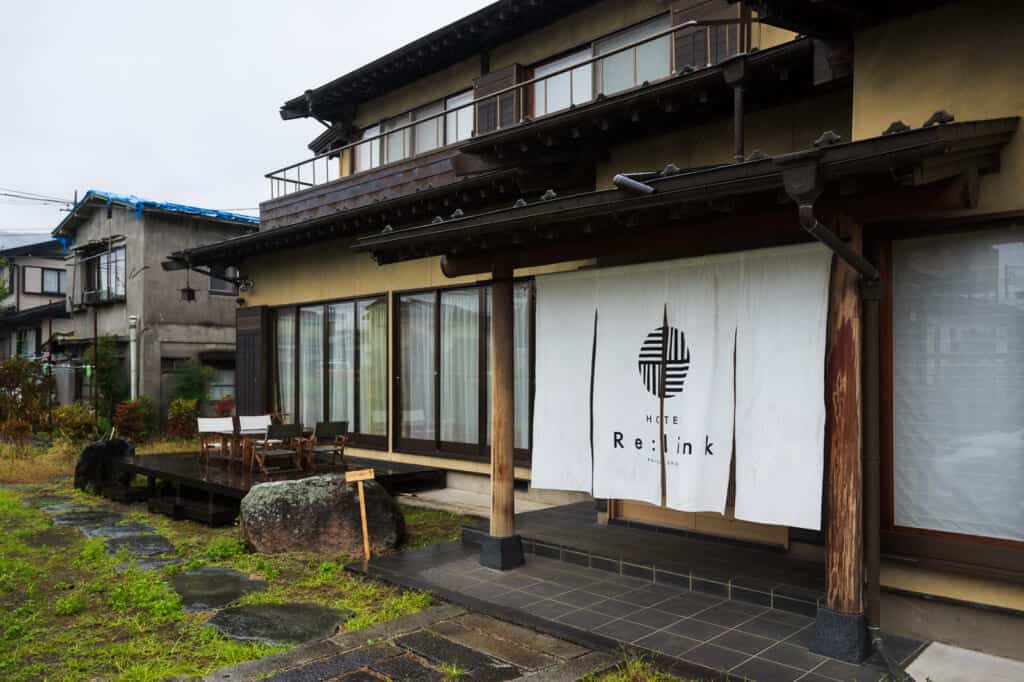
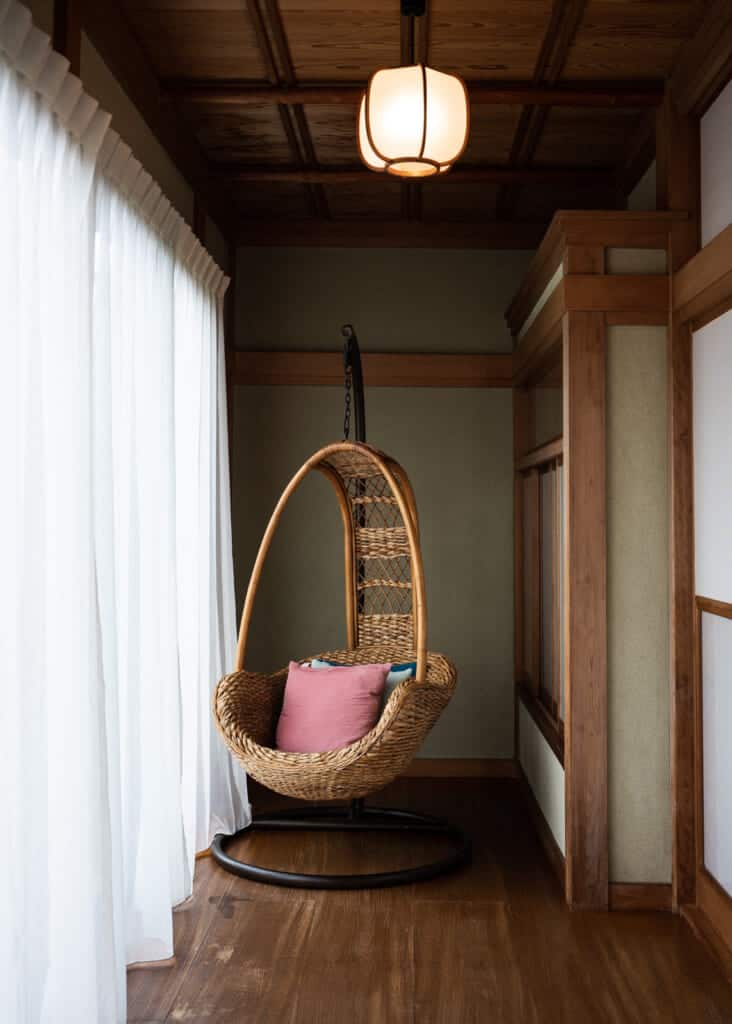
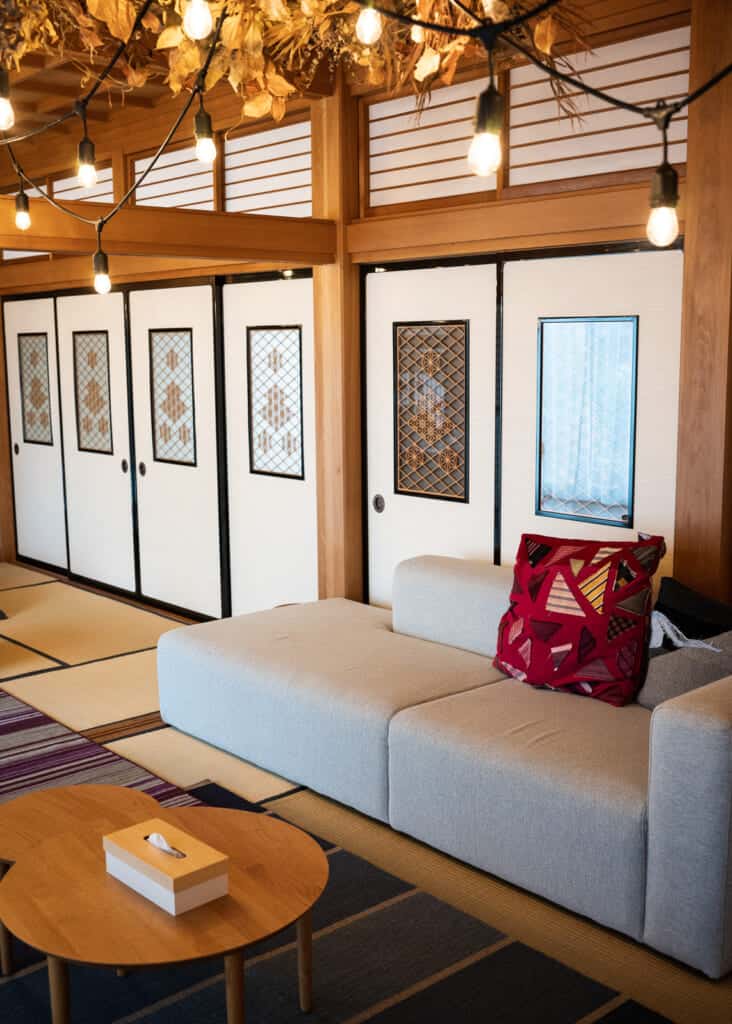
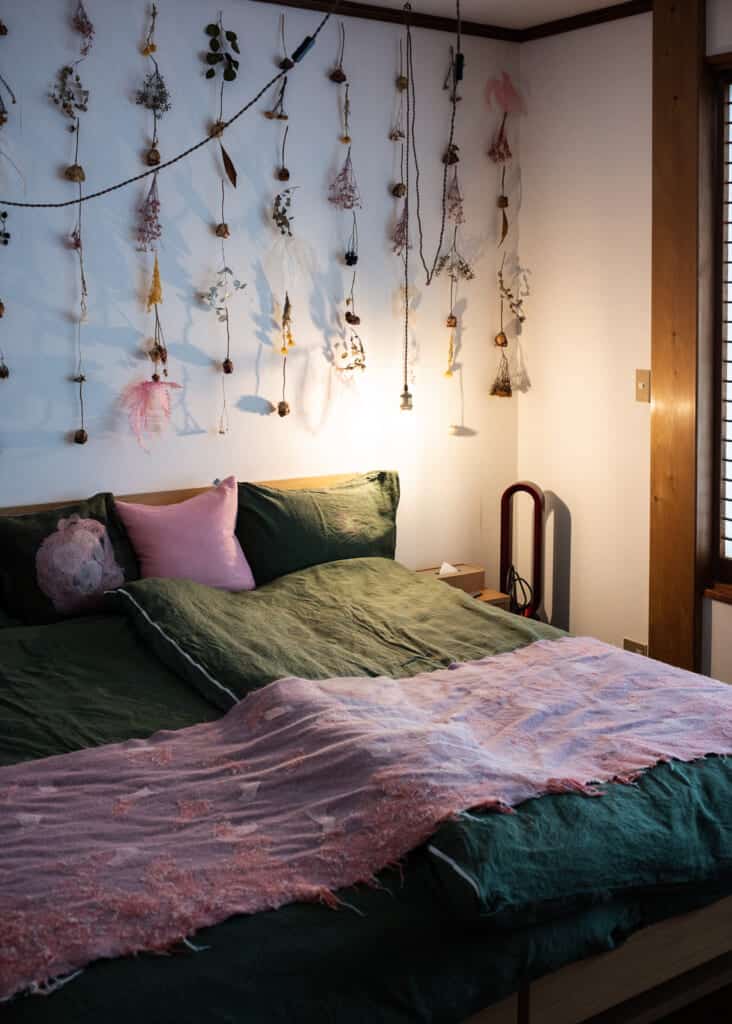
So after a night hitting the bars and restaurants of Nishiura, you’re only a few minutes walk away from your accommodations at Hotel Re:Link. During the day, you can explore the Five Lakes area, enjoy the Fuji-Q Highland theme park, or even climb Mt. Fuji itself.
Picchio: A Wildlife Research Center Tours of Nagano’s Forests & Asiatic Black Bear Conservation in Nagano Prefecture
Karuizawa (軽井沢) is best known as a getaway destination for Tokyoites, with luxury hotels, shopping centers, and golf and ski resorts. It also became internationally known as one of the locations for the Netflix series “Terrace House.” But the organization Picchio exists to show a different aspect of Karuizawa, a town living in a fragile balance between humans and nature.
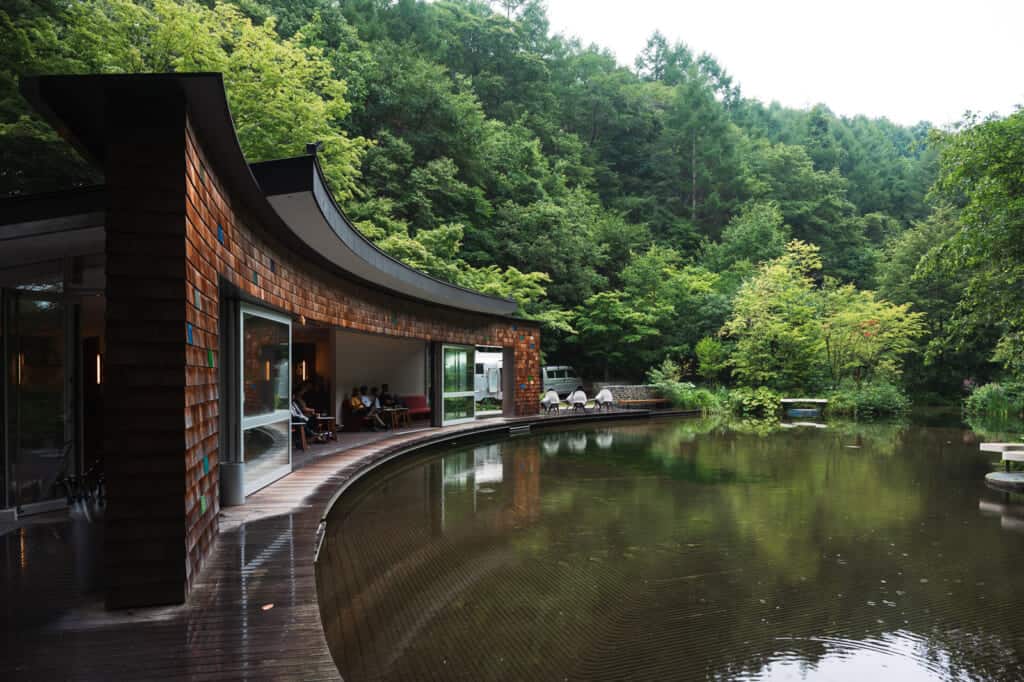
Picchio is a wildlife research center that gives tours of Nagano’s forests and mountains in and around Karuizawa, as well as other locations in Japan’s Okinawan Islands and Hokkaido. While tours in Karuizawa vary from exploring icefalls to nighttime wildlife spotting, the most unique of Picchio’s tours focuses on the conservation of Asiatic black bears, whose habitat overlaps with human development, often creating potentially unhealthy or dangerous situations.
In the past, bears who invaded human space were seen as dangerous pests, and the solution was often to hunt and exterminate them. Through Picchio’s research, it was discovered that humans were a major part of the problem, encroaching on land where the foods bears eat are plentiful and creating easy opportunities for bears to become pests by leaving human food waste in containers bears could easily access.
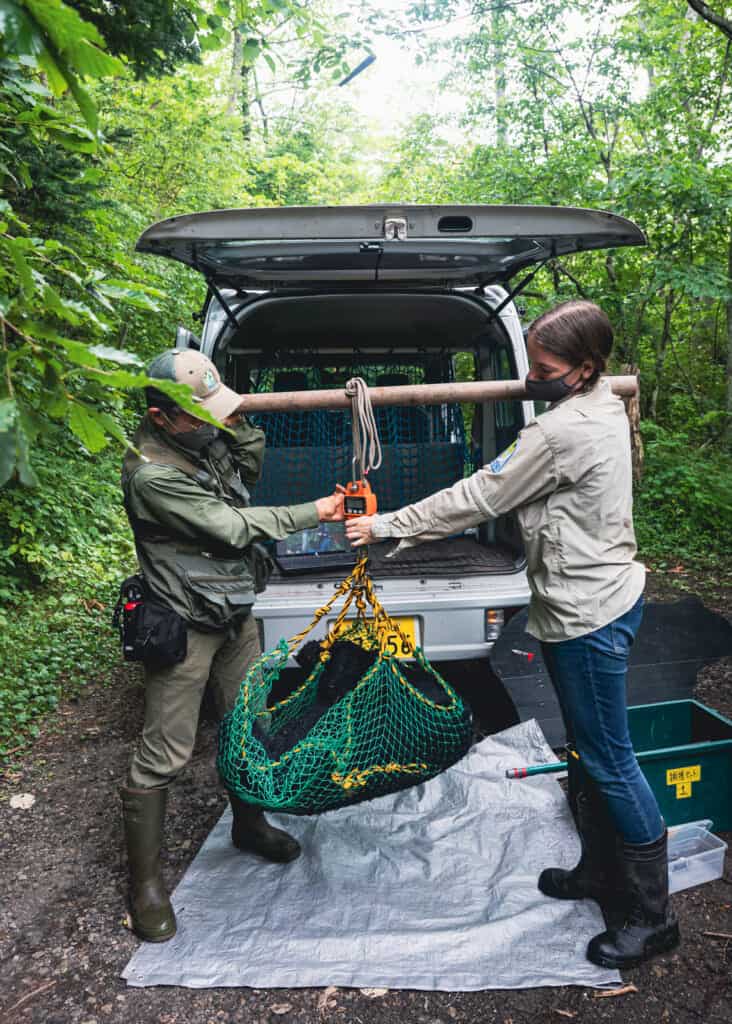
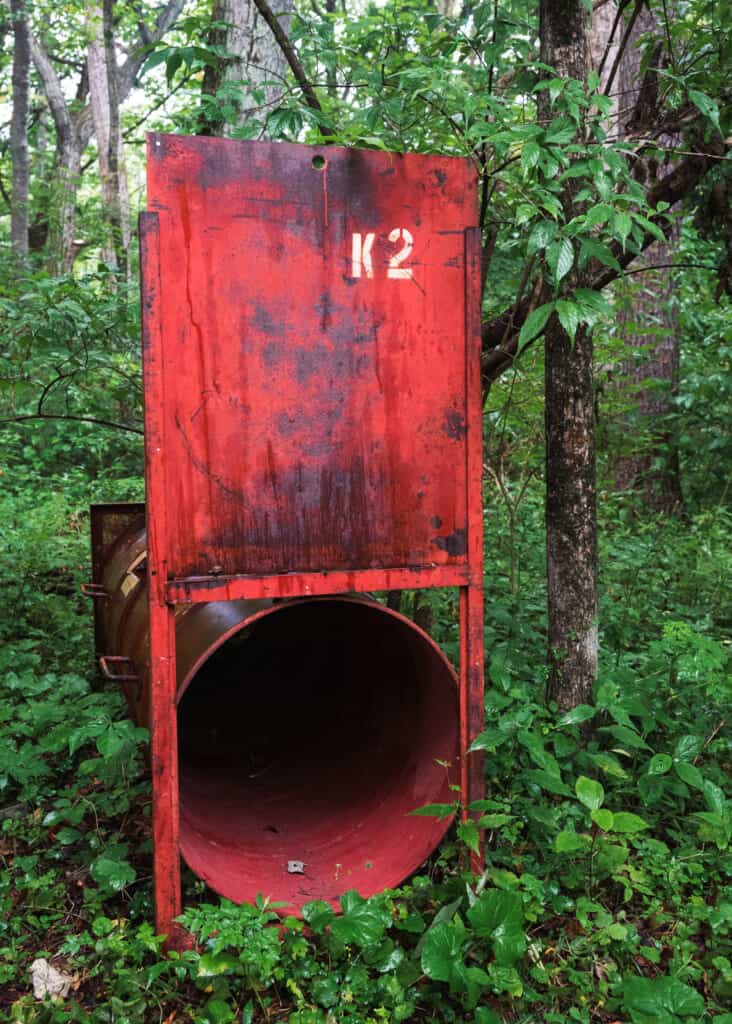
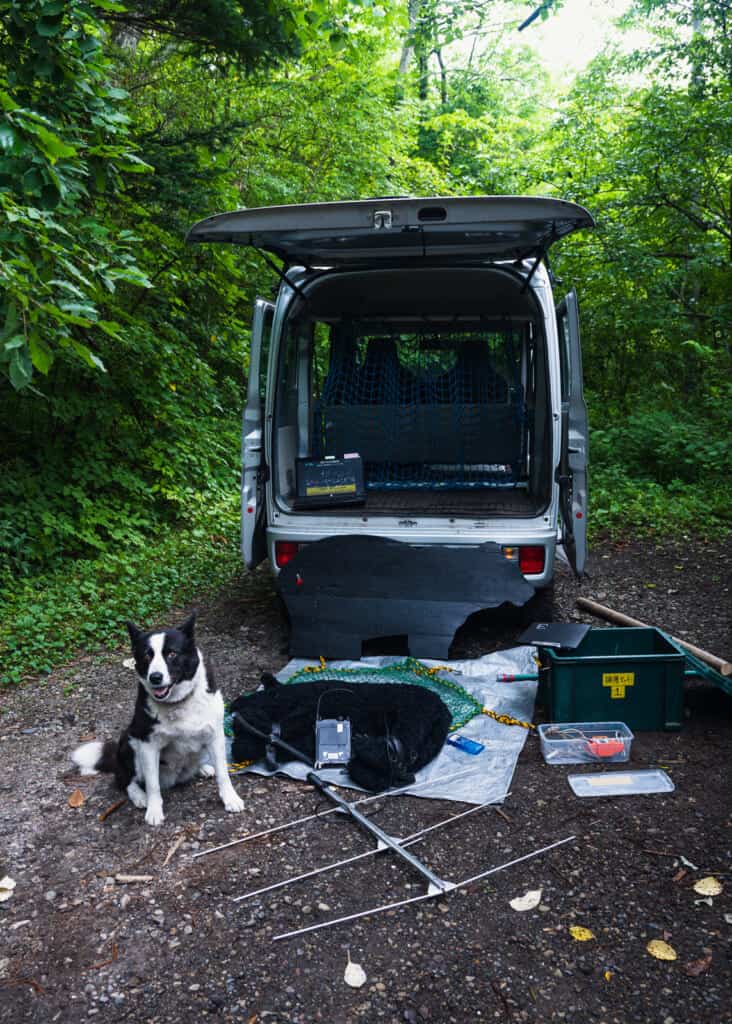
Over the past decades, Picchio’s work has helped greatly reduce unwanted contact between bears and humans with the installation of bearproof garbage containers around the city and Picchio’s work to patrol the Karuizawa area tracking individual bears who are known troublemakers. Rather than destroy these bears, Picchio uses specially trained bear dogs and other methods to frighten bears away from human-inhabited areas. This encounter is usually traumatic enough for most bears to remember and avoid in the future, but more problematic bears sometimes need to be caught, tranquilized, tagged, and transported away from the town, also an activity supported by Picchio.
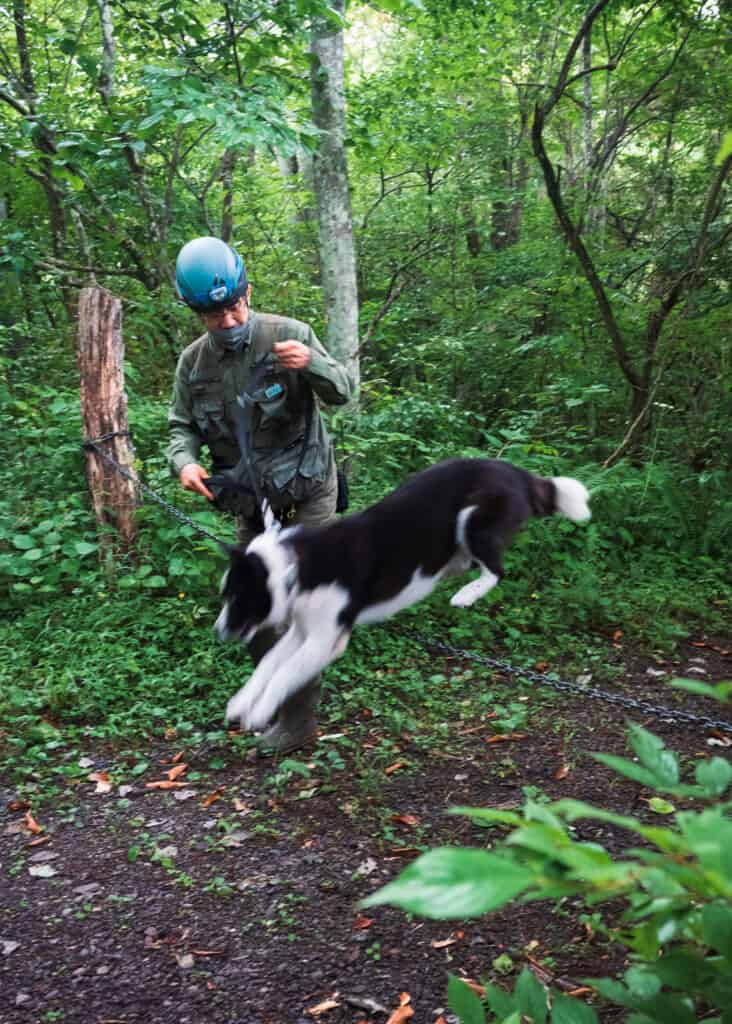
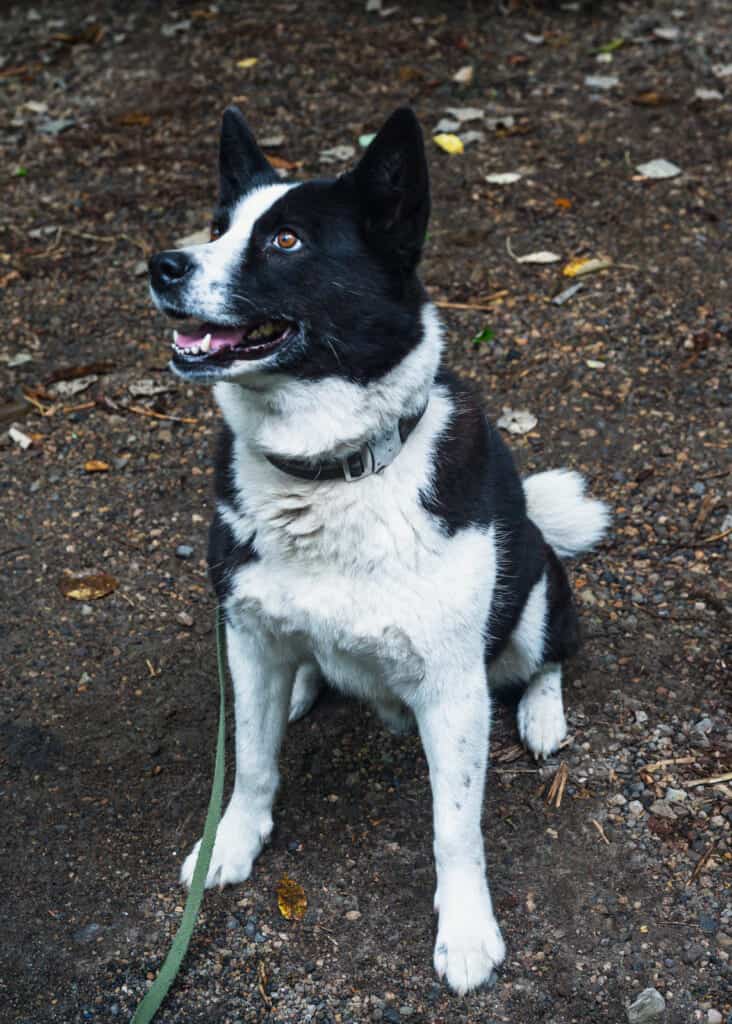
The tour is a detailed look at Picchio’s activities focusing on black bear conservation led by English-speaking guides. You will visit the trails frequented by bears and see a demonstration of how they deal with troublesome bears they need to trap and relocate (using a fake but realistic-looking bear model). You’ll learn how Picchio tags captured bears to enable them to track their locations in the future. You’ll also have a chance to meet the unique bear dogs trained to frighten bears away, and occasionally, you might even encounter a wild bear in a trap or the wild.
Discount Travel Using the JR Pass
Many destinations in and around the Kanto area, including these, can be reached using JR trains. If you plan to travel outside of the Tokyo area on public transportation, consider using these discount transportation passes to save money during your trip to Japan.
For travel to and within Yamanashi, consider the JR TOKYO Wide Pass, with three days of unlimited travel on many train lines within Tokyo, Yamanashi, and many other local prefectures. For travel to and within Niigata and Nagano, the JR EAST Pass allows you five days of unlimited travel to and from these prefectures and other regions, including the use of the Hokuriku (Tokyo- Joetsumyoko only) and Joetsu Shinkansen (all sections). Note that both passes can be used by foreign passport holders living in Japan as well as overseas visitors.
Be sure to check out our other articles about more of the best examples of sustainable tourism in and around Tokyo:
The Best Examples of Sustainable Tourism in Fukushima, Tochigi, Ibaraki, and Gunma
The Best Examples of Sustainable Tourism in Kanagawa, Chiba, Tokyo, and Saitama
If you find these unique destinations intriguing, you’ll find them all and many more on the social media accounts of Tokyo and Around Tokyo. Join us on Facebook and Instagram to explore more of the endless possibilities in sustainable tourism and beyond.
Sponsored by Tokyo & Around Tokyo Promotion Council


